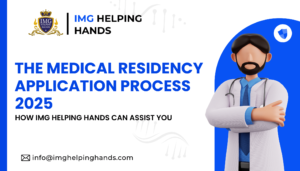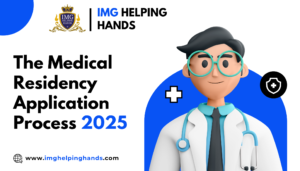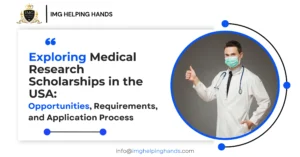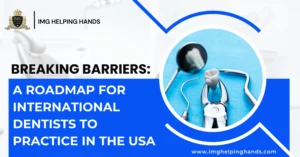
The Medical Residency Application Process 2025: How IMG Helping Hands Can Assist You
Have you ever wondered what it truly takes to secure your dream residency in an ever-evolving medical landscape? As we step into 2025, the residency

The United States Medical Licensing Examination (USMLE) is a multi-step examination required for all medical students and graduates who wish to practise medicine in the United States. Passing this exam is crucial to advance from medical school to residency training.
However, the USMLE is notoriously difficult, with low pass rates for first-time test takers. Preparing for the USMLE requires extensive studying over many months. While no single book can comprehensively cover all the material tested, using prep books is considered essential for success.
These prep books are critical resources that provide the content review, test-taking strategies, and practice questions needed to master this difficult exam. The stress of the USMLE can be alleviated by having the proper books to study.
First Aid for the USMLE Step 1 is the most popular and comprehensive single prep book available. It aims to cover all subjects tested on the exam in a single volume.
First Aid provides the most complete overview of topics to remember for USMLE Step 1 preparation. Its breadth of content is unparalleled, but needs to be combined with other learning resources.
Kaplan Test Prep offers a well-known set of comprehensive books for preparing for each step of the USMLE exams. They aim to provide in-depth review across all subjects.
Kaplan USMLE books are trusted and comprehensive but require sifting through content. They may be most useful when more extensive subject review is needed beyond abbreviated prep books. The practice questions and test prep strategies are also excellent resources.
Pathoma is a popular prep book and video resource used by medical students to study pathology for USMLE Step 1. It aims to explain pathology concepts and tie them to clinical medicine.
Pathoma is an excellent resource for shoring up pathology knowledge for USMLE preparation. It provides unparalleled clarity and clinical connections for this difficult subject. However, its narrow focus means it should be combined with other resources.
Sketchy Medical utilises visual mnemonic pictorials to help students learn and retain key microbiology and pathology facts for USMLE Step 1. Their unique teaching style makes content memorable.
Sketchy Medical provides a uniquely memorable way to learn challenging microbiology and pathology concepts for USMLEs. The pictorial mnemonics aid long-term retention but require invested study time. Using Sketchy alongside comprehensive resources can improve mastery of these difficult subjects.
UWorld offers extensive question banks with detailed explanations to mimic and prepare for the real USMLE exams. They are considered one of the best practice resources.
UWorld subscription provides the most realistic USMLE practice experience and is considered a must-have prep resource by many medical students and educators. The banks are an unmatched tool for identifying knowledge gaps to target.
Preparing for the USMLE requires using prep books targeted to the content and question types for each step. While no singular book can cover everything, a strategic combination provides the most comprehensive preparation. Broad textbooks build foundational knowledge, while streamlined review books like First Aid consolidate high-yield facts.
Question banks like UWorld hone test-taking skills. Resources like Pathoma and SketchyMedical shore up challenging topics. By combining comprehensive texts for in-depth review, focused review books for memorization, question banks for application, and specialised resources to target weaknesses, medical students can thoroughly prepare using the best USMLE prep books available.
Get our most valuable tips right inside your inbox, once per month!

Have you ever wondered what it truly takes to secure your dream residency in an ever-evolving medical landscape? As we step into 2025, the residency

For IMGs, to practice medicine in USA is more than just passing USMLE and securing a residency; it also involves surfing through the intimidating visa

Are you ready to embark on one of the most transformative journeys in your medical career? The residency match process is a pivotal step for

Pursuing medical research in the United States offers unparalleled opportunities for academic growth, access to cutting-edge technology, and the ability to work alongside leading experts

Embarking on a journey to practice dentistry in the United States is a dream for many international dentists. In the vast landscape of American dentistry,

Have you ever considered the transformative power of aesthetics in the field of medicine? Is aesthetic medicine the silent cornerstone of modern clinical practice? Within
We are here to provide a safe and secure helping hand for medical students, graduates, and residents.
Our comprehensive guide will assist you in matching with your top-choice residency or fellowship program.




Payment Methods
Buy with Confidence
© IMG Helping Hands Copyrights 2024 Developed By Ecom Thrust